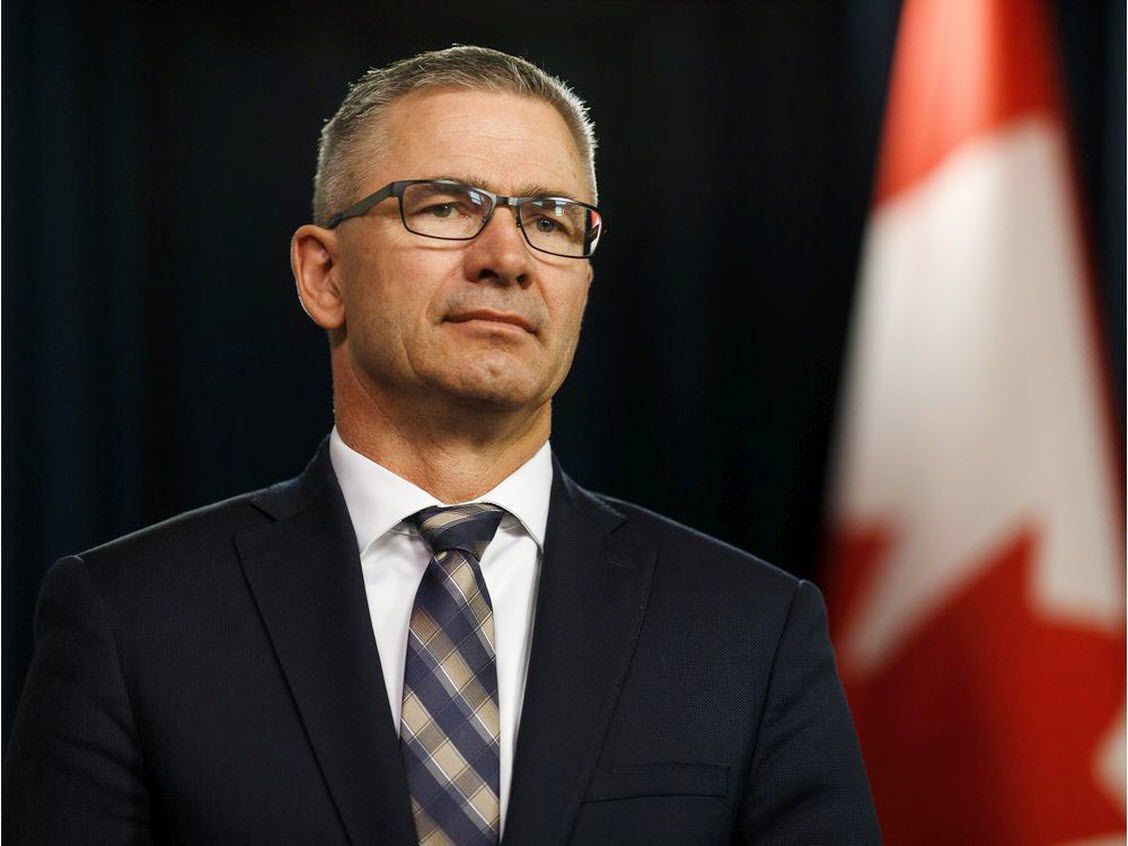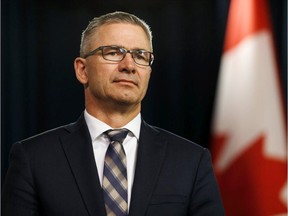Alberta forecasts balanced budgets on surging oil revenues and rebounding activity

A windfall of revenue from resource royalties is helping the province balance the books for only the second time in more than a decade

Article content
A surge in oil revenues and rebounding economic activity will propel Alberta to balanced budgets over the next few years, according to the latest fiscal plan from the province’s United Conservative Party government.
Advertisement
Story continues below
This advertisement has not loaded yet, but your article continues below.
Article content
Alberta will end the year with a much smaller deficit than initially projected: $3.2 billion for the year ending March 31, and budget surpluses in each of the next three years, according to a new budget presented Feb. 24 by Finance Minister Travis Toews.
A windfall of revenue from resource royalties is helping the province balance the books for only the second time in more than a decade. Alberta is now forecasting surpluses over the next three years: $500 million in 2022-23, $900 million in fiscal 2024, and $700 million in fiscal 2025.
Total revenue is forecasted to reach $61.7 billion this year, a dramatic $18 billion upward swing from what was predicted in the depths of the pandemic last February — driven primarily by rising non-renewable resource revenues and income tax receipts as a result of increased employment and household income growth.
Advertisement
Story continues below
This advertisement has not loaded yet, but your article continues below.
Article content
“Oil prices have strengthened to levels not seen since 2014, boosting cash flows and activity in the energy sector,” Toews said at a press conference.
Oil prices have strengthened to levels not seen since 2014
Travis Toews
“But even as the province’s energy industry recovers, Alberta’s economy is becoming more diverse with growing investment in sectors such as digital technology, finance and petrochemical and hydrogen manufacturing.”
The province is forecasting that Alberta’s economy will grow 5.4 per cent in 2022, and inflation-adjusted gross domestic product is expected to grow to $390 billion in 2025.
“We’ve not only recovered all the jobs lost during the pandemic and economic crisis, but we’ve added 33,000 more,” Toews said.
“This trend is expected to continue with projected employment growth of around four per cent in 2022.”
Advertisement
Story continues below
This advertisement has not loaded yet, but your article continues below.
Article content
We’ve not only recovered all the jobs lost during the pandemic and economic crisis, but we’ve added 33,000 more
Travis Toews
But Toews also acknowledged that Alberta remains vulnerable to oil price volatility in part due to a royalty structure that’s “very sensitive” to changes in energy prices.
“I’m very thankful right now that we have significant revenues coming from our energy industry,” Toews said. “But it’s not an either/or … we’re doing all we can and seeing actually great results on economic diversification in this province and that’s reflected in increased corporate tax revenues (and) increased personal income tax revenue projections over the course of the fiscal plan.”
Non-renewable resource revenue is forecasted to reach $13.8 billion in 2022-23 — the second highest amount ever recorded, according to the government.
Advertisement
Story continues below
This advertisement has not loaded yet, but your article continues below.
Article content
Total revenue is forecasted to reach C$62.6 billion in 2022-23, climbing to $63.9 billion in fiscal 2025.
Alberta is projecting oil prices to come down over the next couple of years and non-renewable resource revenues to drop, with the province forecasting West Texas Intermediate (WTI) oil price averaging US$70 per barrel in 2022-23, before settling around US$66.50 per barrel by 2024-25.
Taxpayer-supported debt will reach $97.7 billion by the end of the year, according to the province. The net debt-to-GDP ratio is estimated at 18.3 per cent for the current fiscal year, down significantly from previous estimates of 24.5 per cent.
But for the time being, it appears Alberta won’t be using its revenue windfall to aggressively pay down debt in future years.
Advertisement
Story continues below
This advertisement has not loaded yet, but your article continues below.
Article content
Taxpayer-supported debt is forecast to be $94.7 billion in 2022-23 and will continue to grow to $97 billion in fiscal 2025.
Alberta’s budget also included significant spending initiatives, primarily aimed at shoring up the province’s beleaguered healthcare system, though a number were aimed at industrial and economic development.
-

Surging oil prices won’t be a growth driver for Canada this time around
-

Oil surges past $105 for first time in 8 years as Russia attacks Ukraine
-

Ukraine crisis puts East Coast LNG back on the map
An estimated $175 million over three years in capital grants has been set aside for carbon capture and storage initiatives, which include the Alberta Carbon Trunk Line and Shell Scotford upgrader.
Advertisement
Story continues below
This advertisement has not loaded yet, but your article continues below.
Article content
An additional $305 million over four years is earmarked for the Technology Innovation and Emissions Reduction (TIER) Fund for investments in future carbon capture, utilization and storage projects.
An initiative called Alberta at Work will see more than $600 million invested over the next three years on expanding employment opportunities and addressing skills shortages.
The government also announced new details about a natural gas rebate program coming in October which will help households, farms, and small industrial and commercial operations with rising utility bills; the monthly rebate will be triggered if regulated natural gas companies charge regulated monthly natural gas rates above $6.50 per gigajoule.
The budget also earmarked funds for developing Alberta’s hydrogen and mineral industries. The Alberta Energy Regulator will receive $41 million over the next three years to begin establishing a new regulatory frameworks for geothermal and mineral resources.
• Email: [email protected] | Twitter: mpotkins
Advertisement
Story continues below
This advertisement has not loaded yet, but your article continues below.








